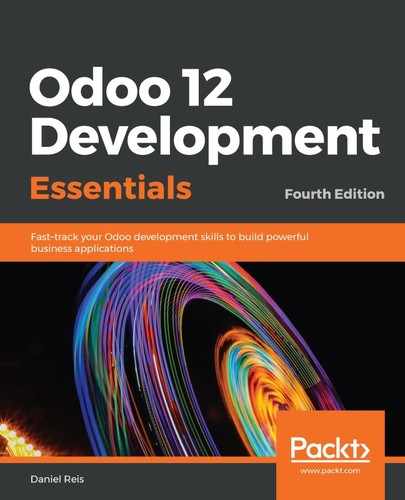There are a number of text conventions used throughout this book.
CodeInText: Indicates code words in text, database table names, folder names, filenames, file extensions, pathnames, dummy URLs, user input, and Twitter handles. Here is an example: "The ~ symbol is a shortcut for the user's home directory, such as /home/daniel."
A block of code is set as follows:
<search>
<filter name="item_not_done"
string="Not Done"
domain="[('x_is_done', '=', False)]" />
</search>
When we wish to draw your attention to a particular part of a code block, the relevant lines or items are set in bold:
<search>
<filter name="item_not_done"
string="Not Done"
domain="[('x_is_done', '=', False)]" />
</search>
Any command-line input or output is written as follows:
$ createdb MyDB
$ createdb --template=MyDB MyDB2
Bold: Indicates a new term, an important word, or words that you see on screen. For example, words in menus or dialog boxes appear in the text like this. Here is an example: "Click on the debug icon and select the Edit Action option. This will open the Window Actions used to open the current Views."
